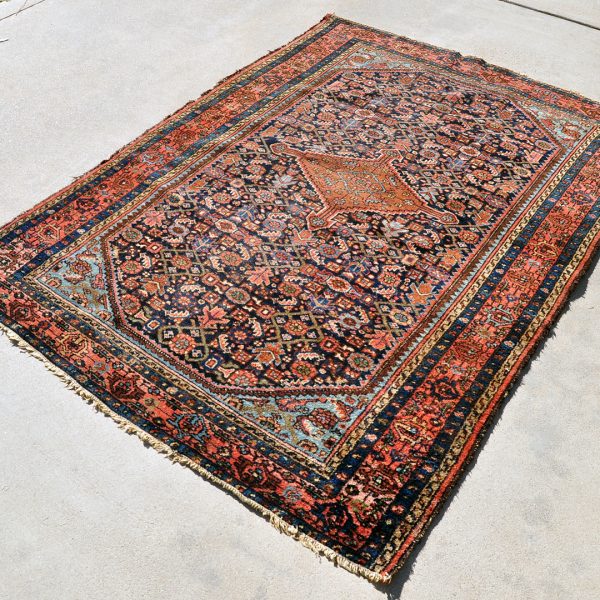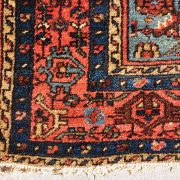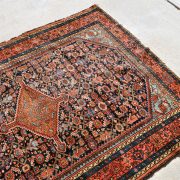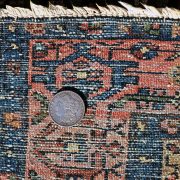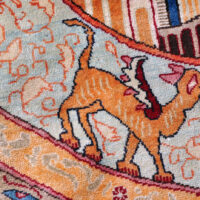Description
Fabulous antique Persian village rug from the Bijar region of Iran.
The rug showcases a traditional Bijar motif: a small central medallion surrounded by a Herati field design.
Guaranteed 100% natural dyes including indigo blue, green, light blue, olive gold, tan, and salmon. No fading and the dyes retain their jewel tone radiance (see CU photos).
Finely woven Bidjar carpet in very good condition for the age. Some minor wear across the wool pile but no holes or weak spots or stains.
The rug has been ‘end-stopped’ to prevent weft unravel and end loss. One corner has been repaired — the repair is about the size of U.S. fifty cent piece (CU photo available on request).
Side cords appear original and have some wear, as well as a small area of recasting. The cotton fringes have a bit of wear and some yellowing from age and a recent wash.
Recently washed! Fringes were not bleached because this weakens old cotton and impairs durability.
There is a large patch of old glue on the backside of the rug– which is only visible from the back. Applied a long time ago, it does not affect the beauty of the rug (photo upon request).
Last photo with the Morgan silver dollar shows the backside of the rug.
Short natural wool pile woven onto cotton warp. 1900 to 1920 era. Exact size is 6 ft. 6 in. by 4 ft. 7 in.
Despite the age and moderate wear the carpet is very solid and can be used a high foot traffic area. A simple mesh pad would help keep it in place if the floor is slippery.
These carpets were woven in the area around Bijar by Kurdish weavers in northwest Iran. Because of their fairly dense weave, Bijar rugs are often called ‘Iron Rugs’ for their legendary durability.
The majority of the population in Iran is of Persian origin but there are a number of sizable minorities. One of these groups are the Kurds who live mainly in the western parts of the country in the provinces of Kurdistan, Zanjan and Kermanshah.
Traditionally, Kurds were nomads but today most are settled, practicing agriculture and stock farming. The men wear distinctive outfits that include baggy pants and a wide belt.
Approximately five million Kurds live in Iran, and large Kurdish areas can also be found in eastern Turkey and western Iraq.
Please email me with questions or to request more photos.
Thank you.
(Bi0018 O29)
